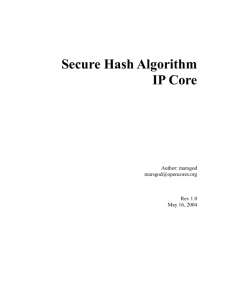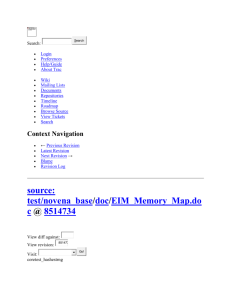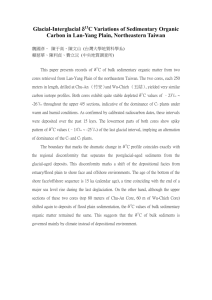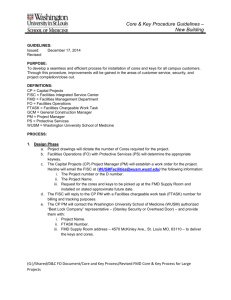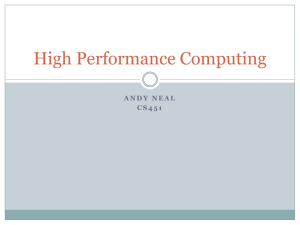Parallel Programming WS15 HOMEWORK #1 (Solutions) 1
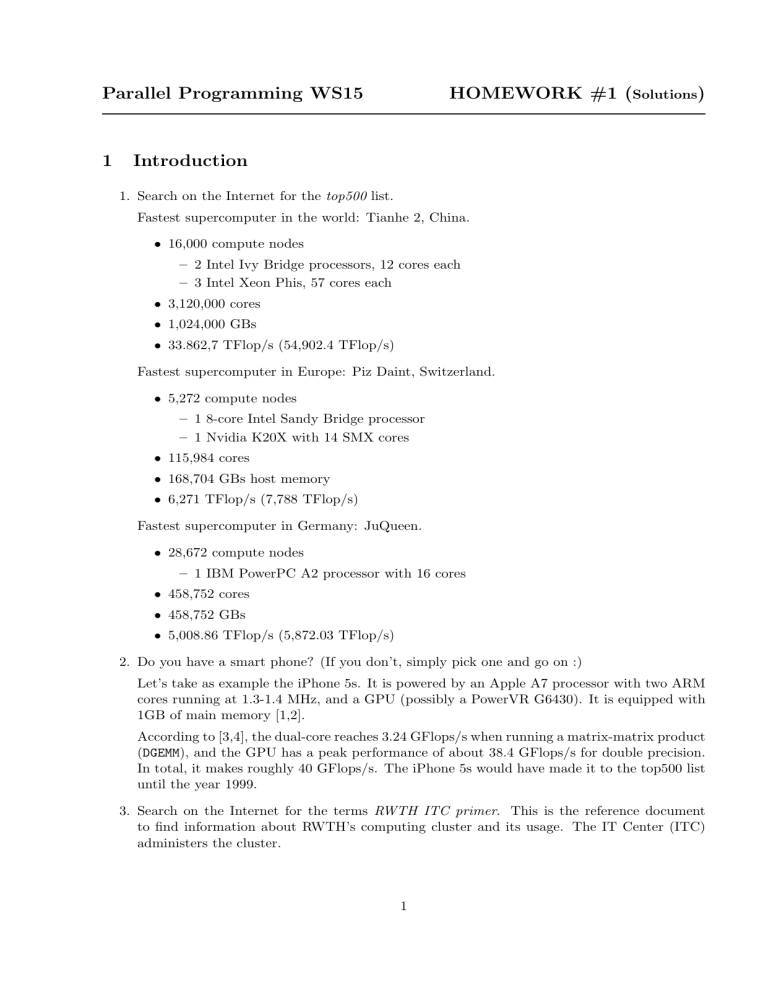
Parallel Programming WS15 HOMEWORK #1 (
Solutions
)
1 Introduction
1. Search on the Internet for the top500 list.
Fastest supercomputer in the world: Tianhe 2, China.
• 16,000 compute nodes
– 2 Intel Ivy Bridge processors, 12 cores each
– 3 Intel Xeon Phis, 57 cores each
• 3,120,000 cores
• 1,024,000 GBs
• 33.862,7 TFlop/s (54,902.4 TFlop/s)
Fastest supercomputer in Europe: Piz Daint, Switzerland.
• 5,272 compute nodes
– 1 8-core Intel Sandy Bridge processor
– 1 Nvidia K20X with 14 SMX cores
• 115,984 cores
• 168,704 GBs host memory
• 6,271 TFlop/s (7,788 TFlop/s)
Fastest supercomputer in Germany: JuQueen.
• 28,672 compute nodes
– 1 IBM PowerPC A2 processor with 16 cores
• 458,752 cores
• 458,752 GBs
• 5,008.86 TFlop/s (5,872.03 TFlop/s)
2. Do you have a smart phone? (If you don’t, simply pick one and go on :)
Let’s take as example the iPhone 5s. It is powered by an Apple A7 processor with two ARM cores running at 1.3-1.4 MHz, and a GPU (possibly a PowerVR G6430). It is equipped with
1GB of main memory [1,2].
According to [3,4], the dual-core reaches 3.24 GFlops/s when running a matrix-matrix product
( DGEMM ), and the GPU has a peak performance of about 38.4 GFlops/s for double precision.
In total, it makes roughly 40 GFlops/s. The iPhone 5s would have made it to the top500 list until the year 1999.
3. Search on the Internet for the terms RWTH ITC primer . This is the reference document to find information about RWTH’s computing cluster and its usage. The IT Center (ITC) administers the cluster.
1
• Find one node/cluster of each type: large cluster ( > 1000 nodes), many-core CPUs ( > =
32 cores), GPUs.
– Large cluster: BULL MPI-S (1098 nodes)
– Many-core node: BULL SMP-S (up to 128 cores)
– GPUs: several 2-GPU nodes
[1] https://en.wikipedia.org/wiki/IPhone 5S#Hardware
[2] https://en.wikipedia.org/wiki/Apple A7
[3] http://www.anandtech.com/show/7335/the-iphone-5s-review/4
[4] http://www.anandtech.com/show/7335/the-iphone-5s-review/7
2

